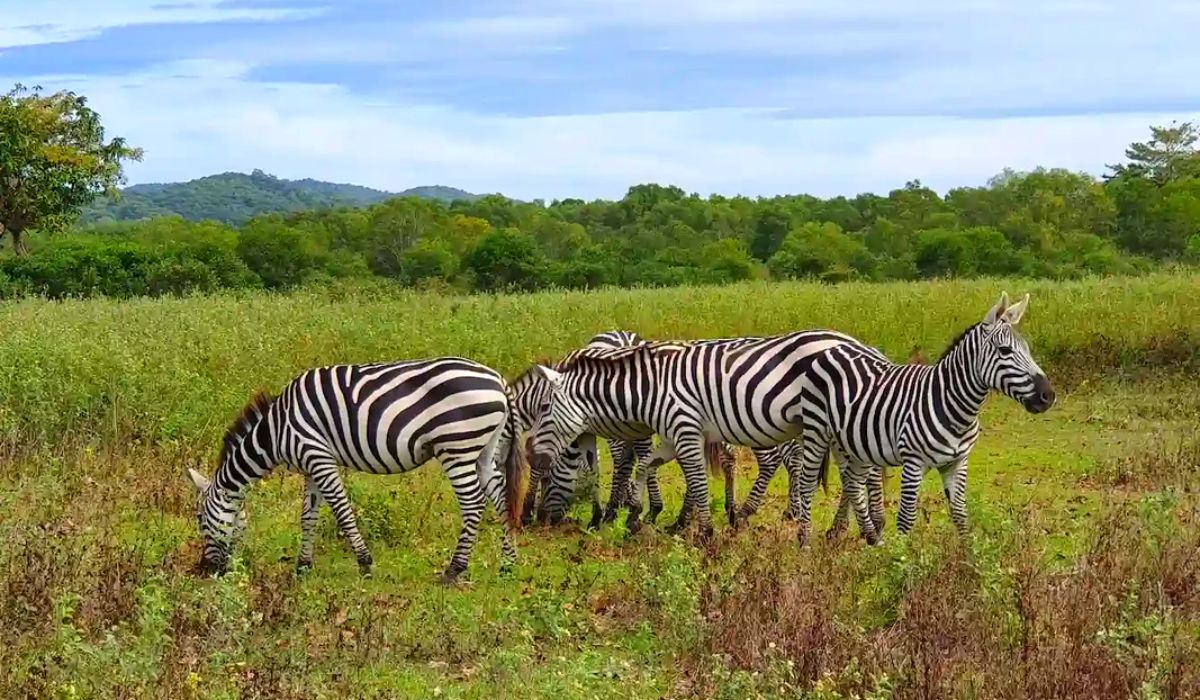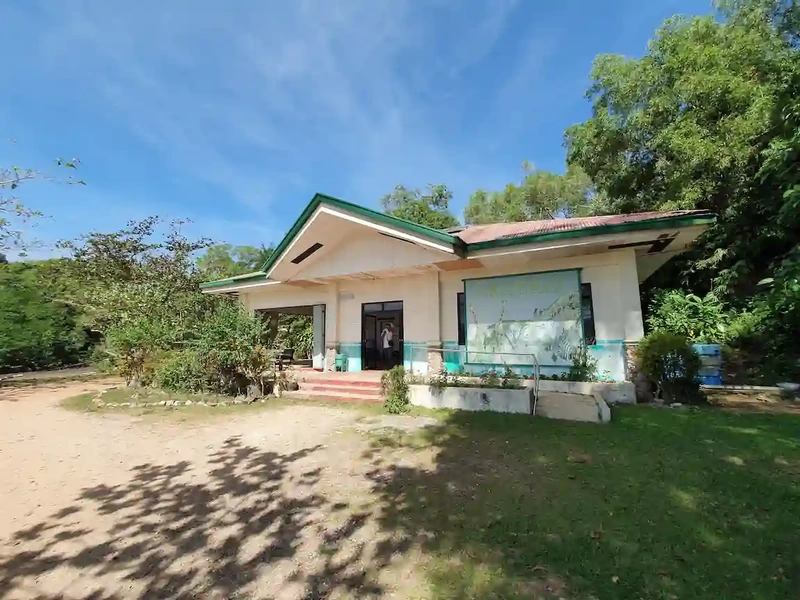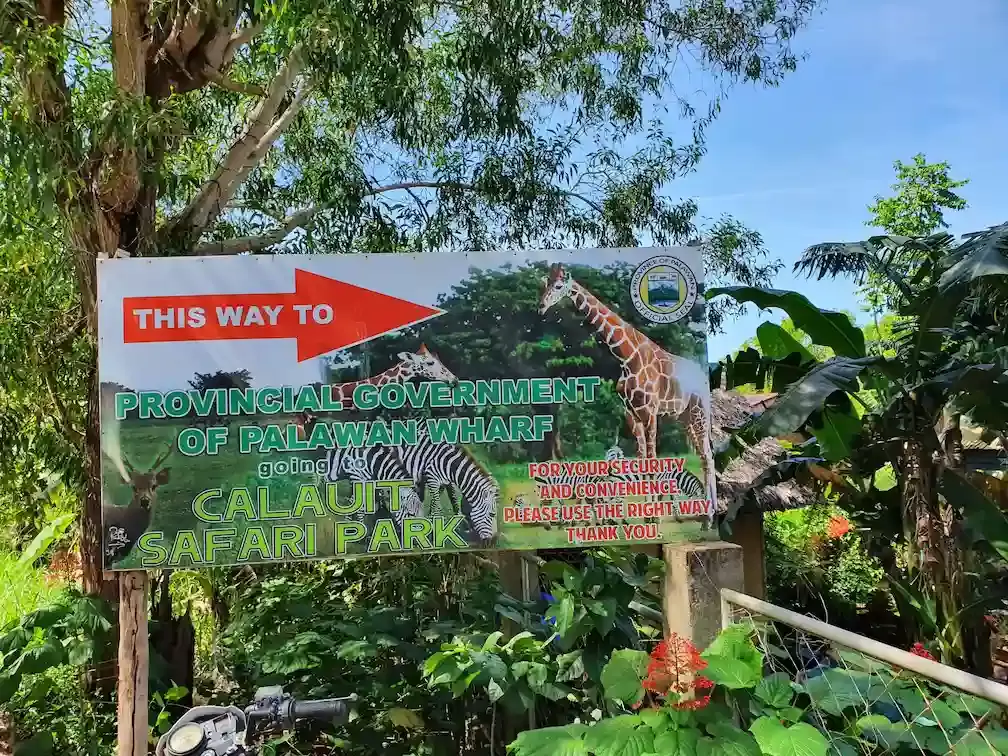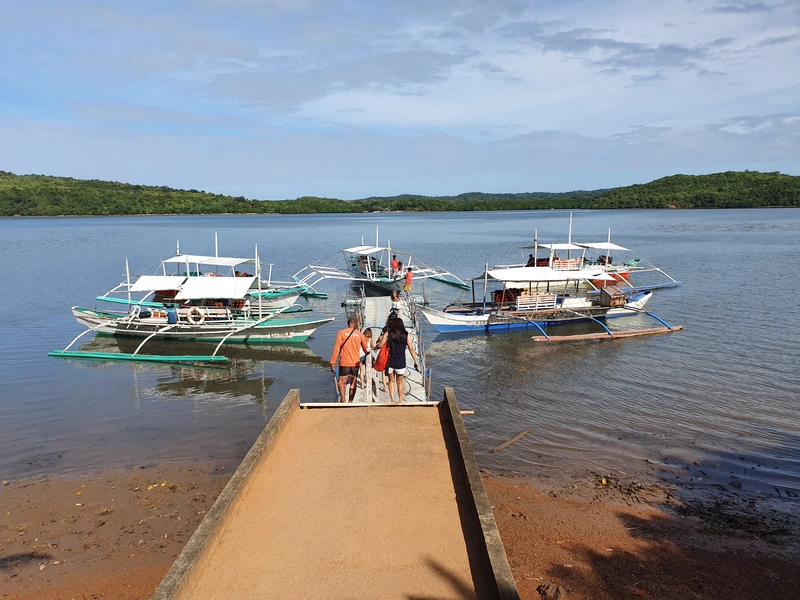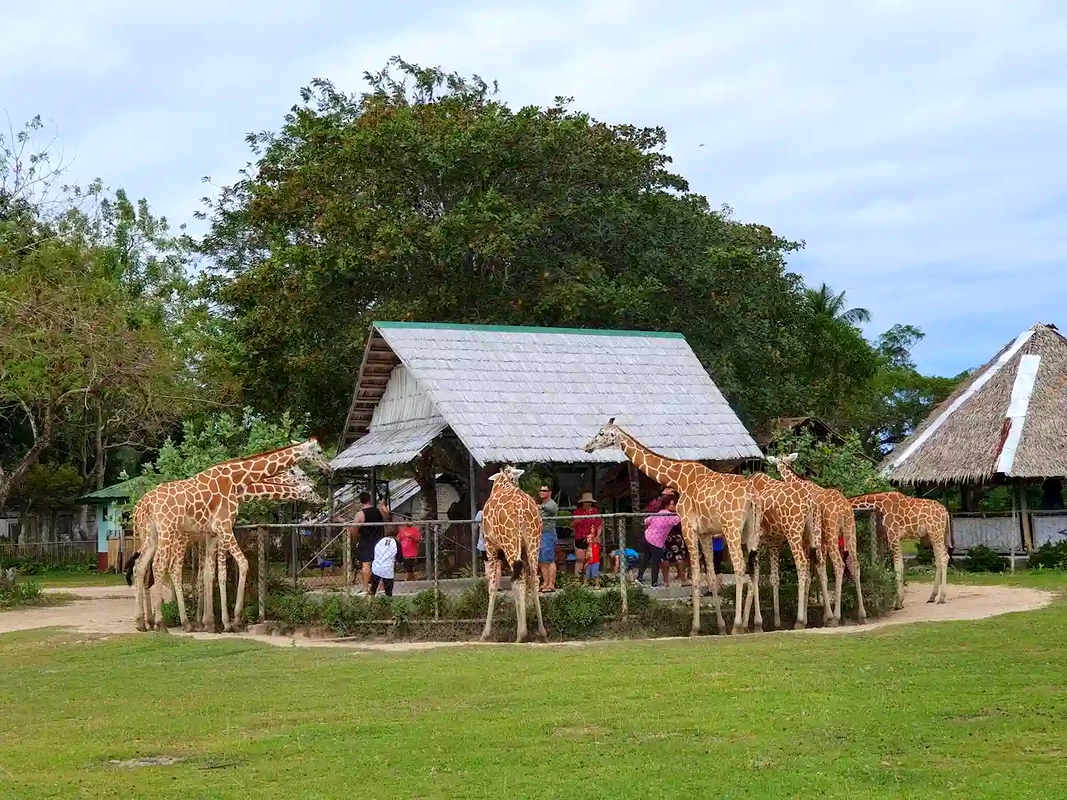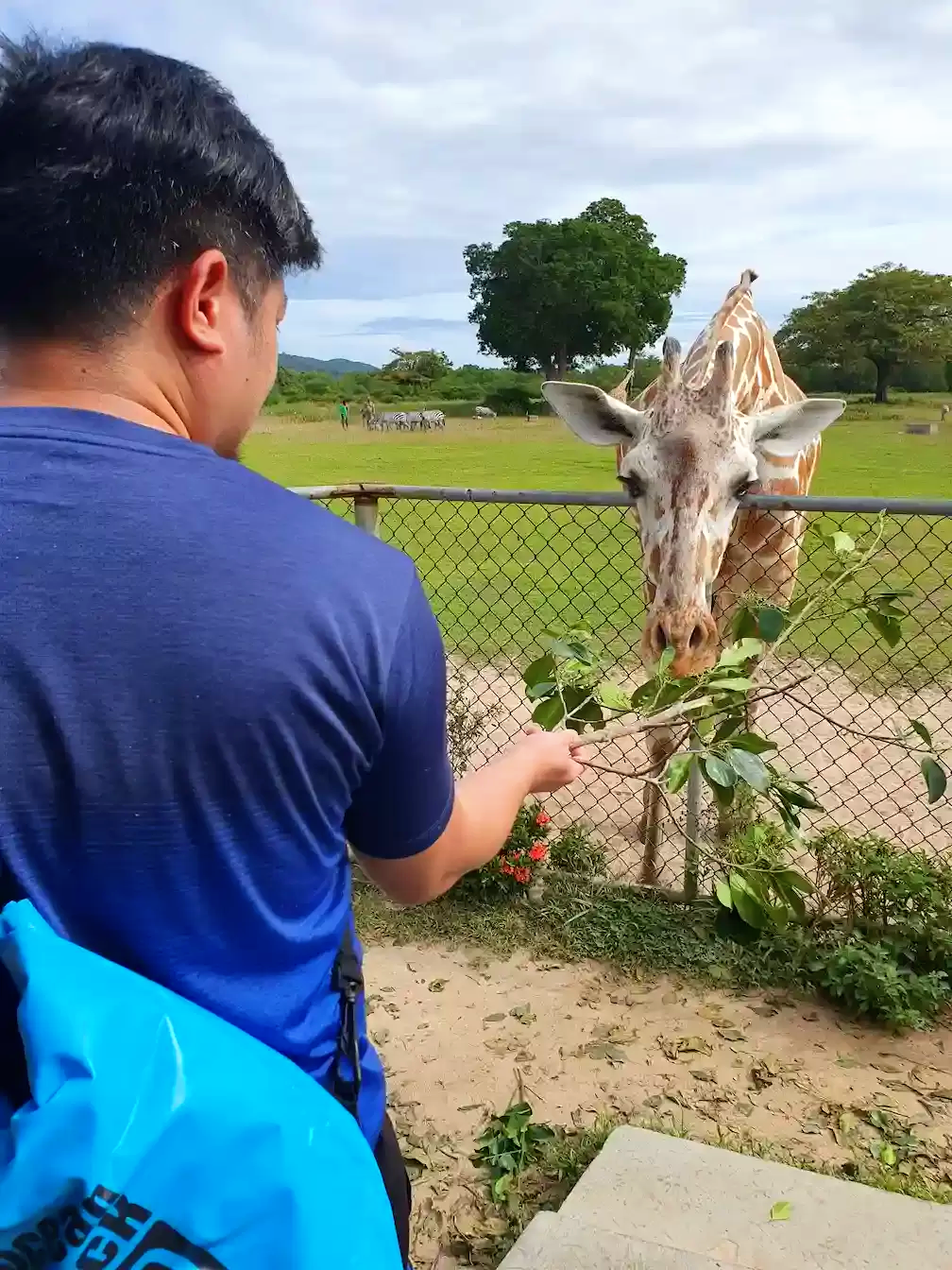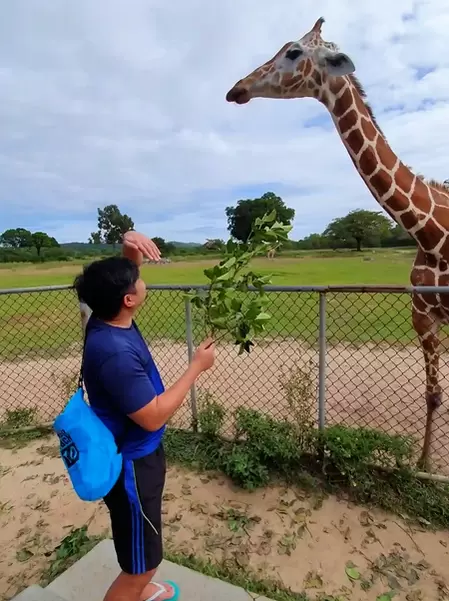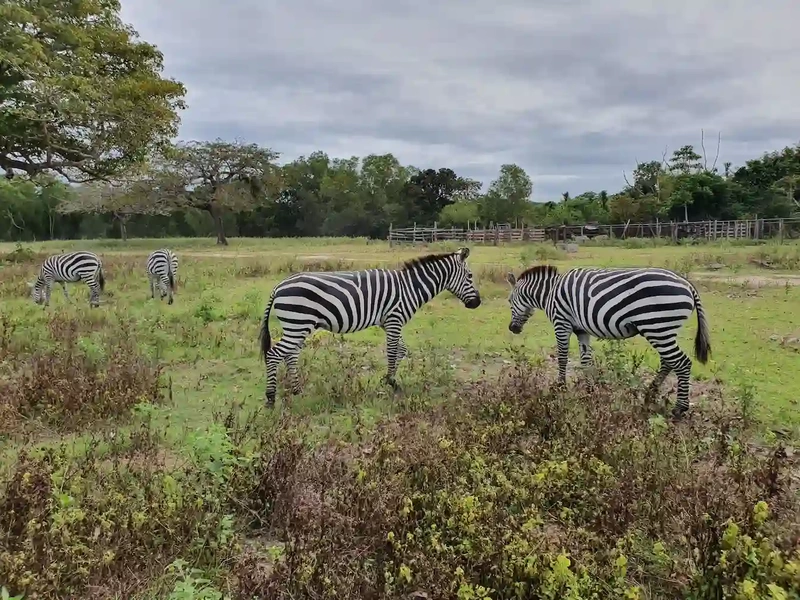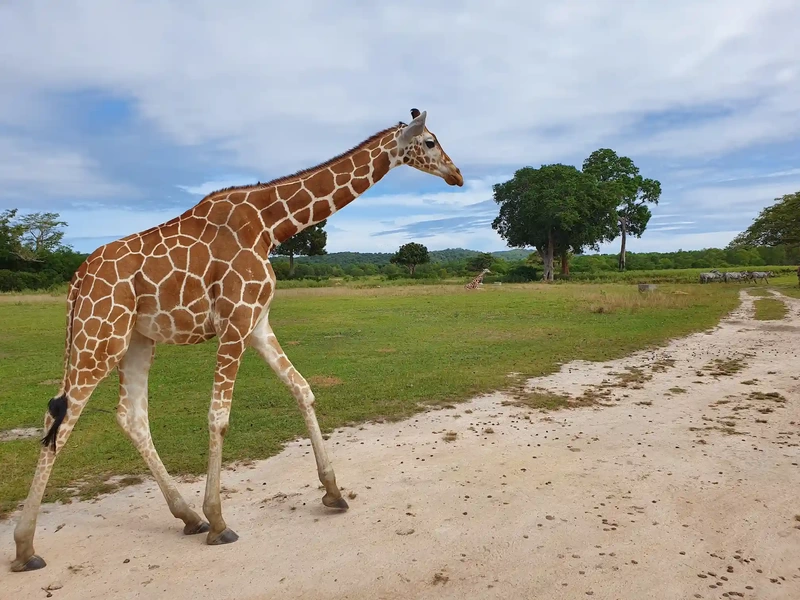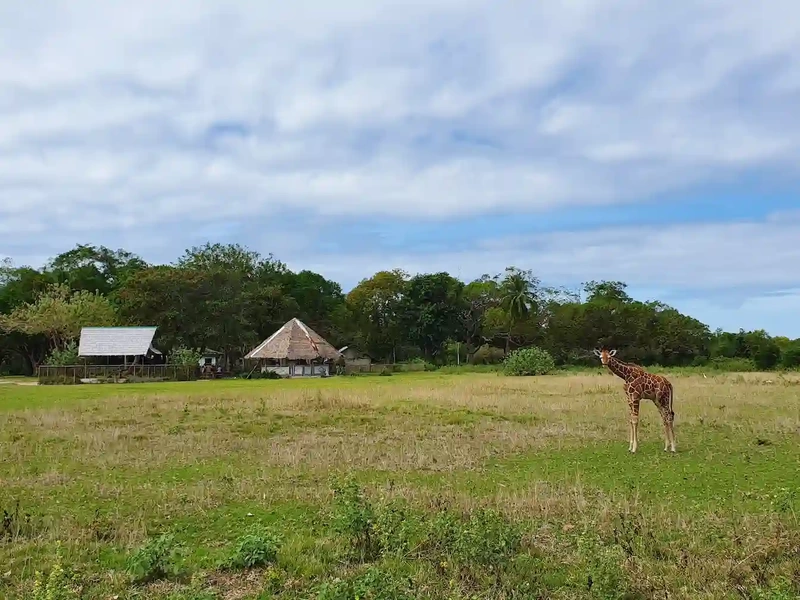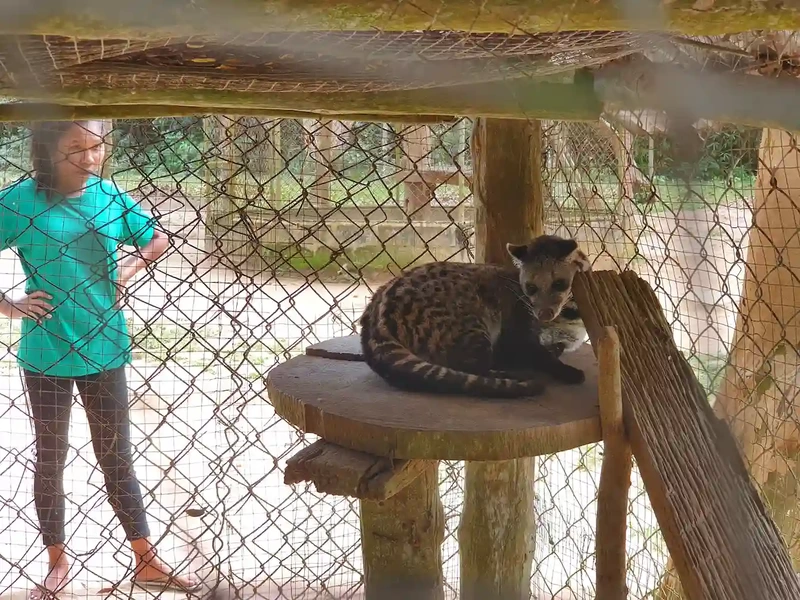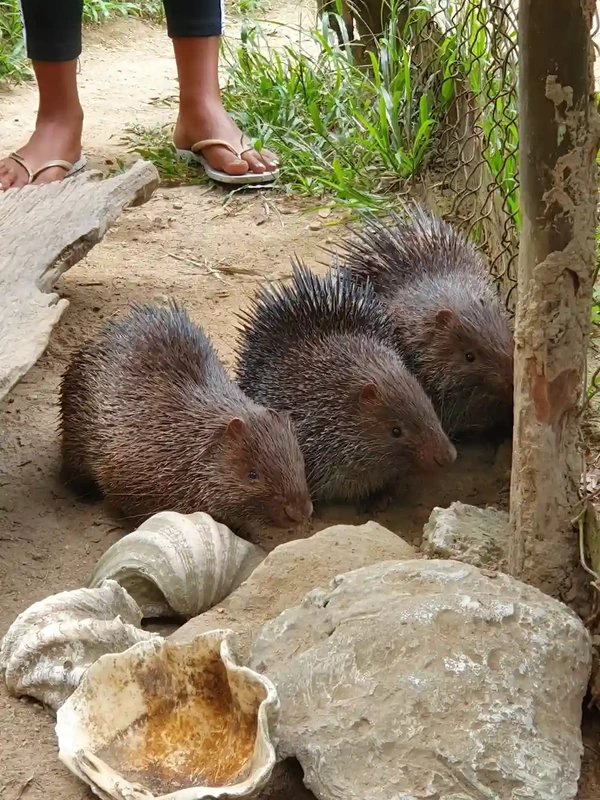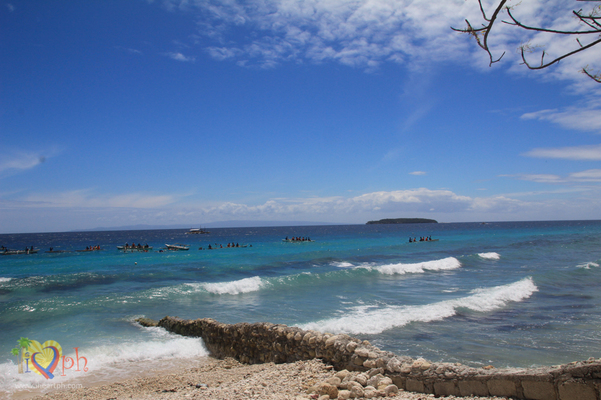The Philippines is known for its beautiful beaches and rich cultural heritage. But did you know that it is also home to a wildlife sanctuary that houses exotic animals from Africa?
Located in the northern part of the Palawan province, the Calauit Wildlife Sanctuary is a must-visit destination if you would like to get up close with giraffes and zebras. In this blog post, we’ll share our experience exploring Calauit Wildlife Sanctuary, and you can read about its history, activities you can do and some of our personal recommendations/tips.
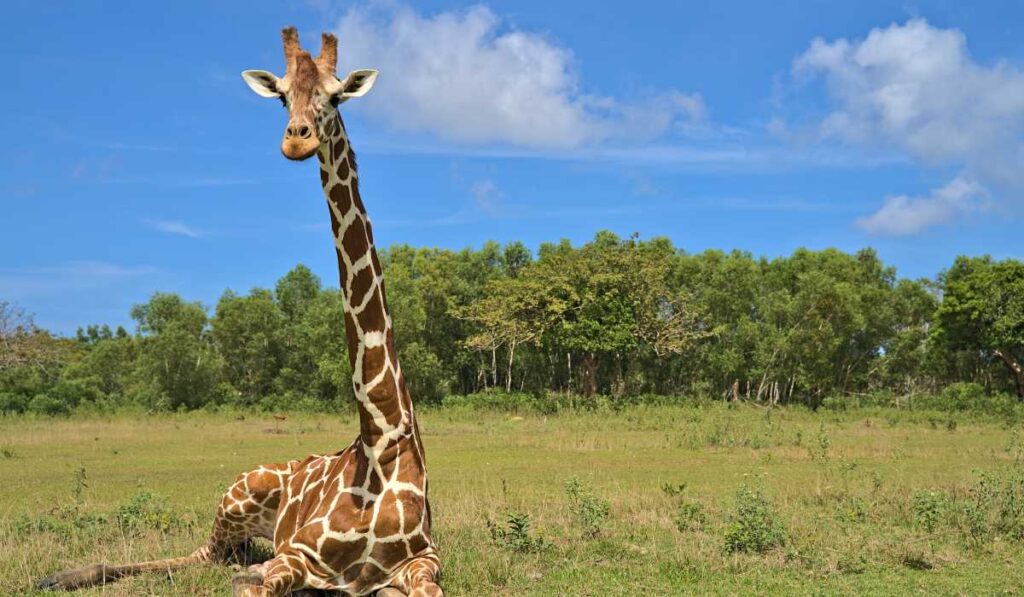
History and Background
Calauit Wildlife Sanctuary was established in 1976 to provide a haven for African wildlife that were nearing extinction as a result of habitat destruction and hunting. Spanning around 3,700 hectares, this sanctuary offers refuge to over 200 African animals, plus native Philippine species.
The park is also certified by ASEAN Heritage Park, underscoring its importance in biodiversity conservation and promoting sustainable tourism.
Book your safari tour here: Coron Calauit Safari and Beach Tour
How to get there
To reach Calauit Wildlife Sanctuary, you need to travel to the town of Busuanga in Palawan, either by air or sea. From there, you have 3 options:
- Hire a private van
- Hire a private boat
- Join a group tour
Calauit Wildlife Sanctuary is a 2-3 hour drive from the town proper to the sanctuary, passing through scenic landscapes and local communities. The roads can be bumpy and dusty, so be prepared for a rough ride. It’s best to travel early in the morning to avoid the heat and crowds.
Hire a private van
One option is to hire a private van to reach the sanctuary, which is located on the northern part of the island. If you would like to hire a private van, especially if you’re traveling with your family or a big group, you can try booking here: Coron Private Van Transfer.
This usually costs PHP 5,000 (approximately 90 USD) depending on the number of passengers.
It’s always a good idea to check with different tour operators to compare prices and inclusions, and to read reviews from previous customers to ensure that you are getting a good deal.
Just note that if you are hiring a private van, you have to arrange the boat transfers and cover the entrance fees yourselves, which can be a more costly or cost-effective depending on how many you are in the group or how much your budget is.
Hire a private boat
Alternatively, you can also take a boat from Coron town to Calauit Island, which is where the sanctuary is located. The boat ride takes around 2-3 hours and can be arranged through your hotel or a local tour operator.
This option, although it offers a unique perspective of the surrounding islands and waters, can be quite expensive due to the distance of Calauit from Coron town.
The cost would differ between hotels and tour operators but last time I checked with a local agency, this would cost up to PHP 12,000 for 5-8 pax.
Join a group tour
Private van transfers can be expensive so if you are tight on budget, you can join a group tour instead so you can share the costs with other tourists.
The cost of a joiner tour to Calauit Wildlife Sanctuary can vary depending on the tour operator and the inclusions. However, based on our research, joiner tours to the sanctuary typically cost around Php 2,000-2,500 (USD 37-45) per person.
These tours usually include transportation from Coron to the sanctuary, boat transfers, entrance fees, and the services of a tour guide. Some tours may also include other activities such as snorkeling or a visit to nearby islands.
If you would like to join a tour, there’s a really cheap group tour via Klook that will also take you to the beautiful Black Island, North Cay or Pamilacan Island for an afternoon swim. Check that out here: Coron Calauit Safari and Beach Tour.
How much is the entrance fee?
If you are going there without a group tour, you have to pay these fees when you enter the wildlife sanctuary:
- Entrance fee: Php 300/pax (~USD 5)
- Environmental fee Php 100/pax (~USD2)
- Tour guide: Php 125/head (~USD2)
- Round trip boat ride: Php 550 (for a group of 4) (~USD10)
- Safari bus (optional): Php 125/pax (~USD2)
If you already booked a group tour, these entrance fees should already be included. But if you have booked a private tour, most likely you will have to pay these fees for your group.
Book your safari tour here: Coron Calauit Safari and Beach Tour
What are the rules inside the safari?
These are the rules and regulations that visitors should follow:
- Visitors are required to pay an entrance fee and an environmental fee to enter the sanctuary, unless you are part of a group tour where these are already covered.
- Feeding of animals is only allowed in designated areas and with the supervision of the guides.
- Visitors are not allowed to bring in any food or drinks for the animals.
- Littering and smoking are strictly prohibited inside the sanctuary.
What are the activities and attractions?
Calauit Wildlife Sanctuary is home to a variety of animals, including giraffes, zebras, impalas, deers, boars, crocodiles, and more. Visitors can enjoy various activities and attractions in the sanctuary, such as animal feeding, safari tours, wildlife photography, among others.
We had the opportunity to experience some of the activities during our visit, and here’s what we thought of each activity:
Giraffe feeding
This is a must-do activity and probably the main thing that you can do in Calauit Wildlife Sanctuary. You can feed giraffes with leaves provided by the guides. The giraffes are very friendly and will eat right out of your hand.
This was definitely a highlight of our trip. We were given leaves to feed the giraffes, and it was amazing to see them up close and personal. We’d rate this activity 5/5 stars.
I also liked the idea of humans being caged while the giraffes roam free and it’s really up to them if they want to get close to the humans to feed.
Book your safari tour here: Coron Calauit Safari and Beach Tour
Safari tour
We hopped on a safari bus to explore the sanctuary and see the other animals. The tour guide shared some interesting facts about the zebras, impalas, deers, boars and more, but the enclosures for some of them were quite small and didn’t seem to be in great condition.
The guide told us that they rotate the animals in and out of the sanctuary to give them a chance to rest and breed, which was reassuring.
Overall, we found the safari tour to be average. You also have to pay for this if you’re not on a group tour, which for me, would be a bit waste of money.
It’s better to explore the sanctuary by foot, to be honest, but I would suggest to still get a tour guide who can at least show and guide you around, and share with you the history of the sanctuary.
Book your safari tour here: Coron Calauit Safari and Beach Tour
Zoo exhibit
The sanctuary also has a mini-zoo with a few caged animals, including monkeys, civet cats, and crocodiles. While the giraffes and zebras roam free on the island, these animals are kept in small enclosures that didn’t seem well-cared for. We found this aspect of the sanctuary to be quite disappointing.
Wildlife photography
This sanctuary offers a unique opportunity to take stunning wildlife photos. If you are fond of wildlife photography, this can be a chance for you to capture the majestic giraffes and zebras, as well as the other exotic animals in their natural habitats.
Nature walk
Instead of hoping on the safari tour, you can take a leisurely stroll around the sanctuary and enjoy the lush vegetation and beautiful scenery. Keep an eye out for native Philippine species, such as the Palawan peacock-pheasant and the Philippine mouse-deer.
Book your safari tour here: Coron Calauit Safari and Beach Tour
Tips for Visitors
If you’re ready to explore this attraction, here are some helpful tips to make your journey comfortable and enjoyable:
What to pack and bring with you
- Bring sunscreen, hats and sunglasses to shield yourself from the sun’s harsh rays.
- Wear comfortable walking shoes – you’ll be doing a lot of exploring!
- Apply insect repellent, especially during the rainy season.
- Wear light, breathable clothing – temperatures can get high inside the sanctuary.
- Pack some hydration and snacks – there are limited food and drink options inside the park.
- Bring a camera – don’t miss any chance to capture the incredible views and wildlife sightings.
Best time to visit
The best time to visit the sanctuary is during the dry season, which runs from December to May. This is when the weather is generally sunny and dry, and the animals are more active.
It is also advisable to go early in the morning to avoid the heat and the crowds. In addition, if you’re planning to visit the sanctuary during the giraffe feeding hours (usually in the morning until early afternoon), be sure to arrive early to avoid missing out on the opportunity to feed them.
Book your safari tour here: Coron Calauit Safari and Beach Tour
Our Experience
Our experience in Calauit Wildlife Sanctuary was both exhilarating and disappointing. While we enjoyed the opportunity to get up close and personal with the giraffes and zebras and appreciated the knowledge and passion of our tour guide, we were also disappointed to see some of the animals being kept in small enclosures that didn’t seem well-cared for.
However, the sanctuary’s stunning scenery, diverse array of wildlife, and unique activities make it a must-visit destination for nature lovers and animal enthusiasts. The giraffe feeding and safari tour are worth experiencing, but visitors should also be prepared for some of the animals being kept in less-than-ideal conditions.
We would recommend visiting Calauit Wildlife Sanctuary, but with the caveat that visitors should be aware of the sanctuary’s limitations and potential issues. If you do decide to visit, we recommend going early in the morning to avoid the heat and crowds, and bringing plenty of water and snacks for the trip.
Overall, Calauit Wildlife Sanctuary offers a unique and unforgettable experience, and we are grateful for the opportunity to have visited. While there are certainly areas for improvement in the sanctuary’s animal welfare and conservation efforts, we hope that visitors can still appreciate the sanctuary’s stunning natural beauty and the opportunity to get up close with some of the world’s most majestic animals.

